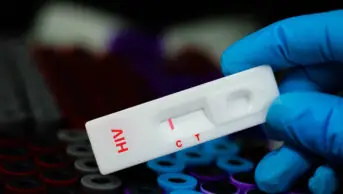Patients who are prescribed warfarin to treat atrial fibrillation (AF) are at an increased risk of stroke during the first 30 days of treatment compared with patients not given anticoagulants, according to a recent study (European Heart Journal, online 18 December 2013). However, in contrast, stroke risk is halved in those who have used warfarin for more than 30 days compared with non-users, say the researchers.
Sotiris Antoniou, consultant pharmacist for cardiovascular medicine at Barts Health NHS Trust, told PJ Online that the findings should not deter clinicians from using warfarin, but he added that “we should be vigilant when initiating warfarin, particularly in the first week of use”.
The population-based study, which used data from the UK Clinical Practice Research Datalink, involved 70,766 patients with AF. Mean age was 74.1 years and mean duration of follow-up was 3.9 years. Stroke cases were matched for age, sex, date of AF diagnosis and time since AF diagnosis with up to 10 controls. The study was funded by Bristol-Myers Squibb and Pfizer.
Study results
During the first 30 days after starting warfarin, a 71 per cent increased risk of ischaemic stroke was observed compared with no use of anticoagulants (rate ratio 1.71, 95 per cent confidence interval 1.39–2.12).
The risk was highest in the first three days of warfarin treatment (2.33, CI 1.50–3.61). Beyond 30 days, risk of ischaemic stroke was reduced (31 to 90 days: 0.50, CI 0.34–0.75; >90 days: 0.55, CI 0.49–0.61).
According to the researchers, patients with a history of ischaemic stroke had a higher increased risk during the first 30 days of treatment (2.45, CI 1.72–3.49), whereas those with no history of ischaemic stroke had a lower increased risk (1.30, 1.04–1.63).
Mr Antoniou pointed out that the authors provide a plausible reason for the difference in the effects of warfarin. Although the drug blocks the activation of clotting factors II, VII, IX and X, it also deactivates the body’s natural anticoagulants, proteins C and S, which have a shorter half-life and so are depleted quicker than the clotting factors. Rapid depletion of protein C, in particular, might lead to a temporary hypercoagulable state.
Consider bridging strategy
“This finding suggests that bridging [with heparin] should be considered when initiating warfarin for stroke prevention in AF,” said Mr Antoniou, adding that the paper did not make it clear how warfarin was loaded (low dose versus high dose).
He also suggested that it would have been useful to know how quickly the therapeutic range for warfarin was reached, as well as having a closer analysis of patients’ baseline risk of stroke and bleeding (for example, CHA2DS2-VASc and HAS-BLED scores, respectively).
He told PJ Online that, as with any treatment strategy, the risk-benefit ratio should be assessed. “In some there may be an apparent need for bridging and in others not,” he said.
- This article was amended on 24 December 2013 to include the study’s sponsors.


